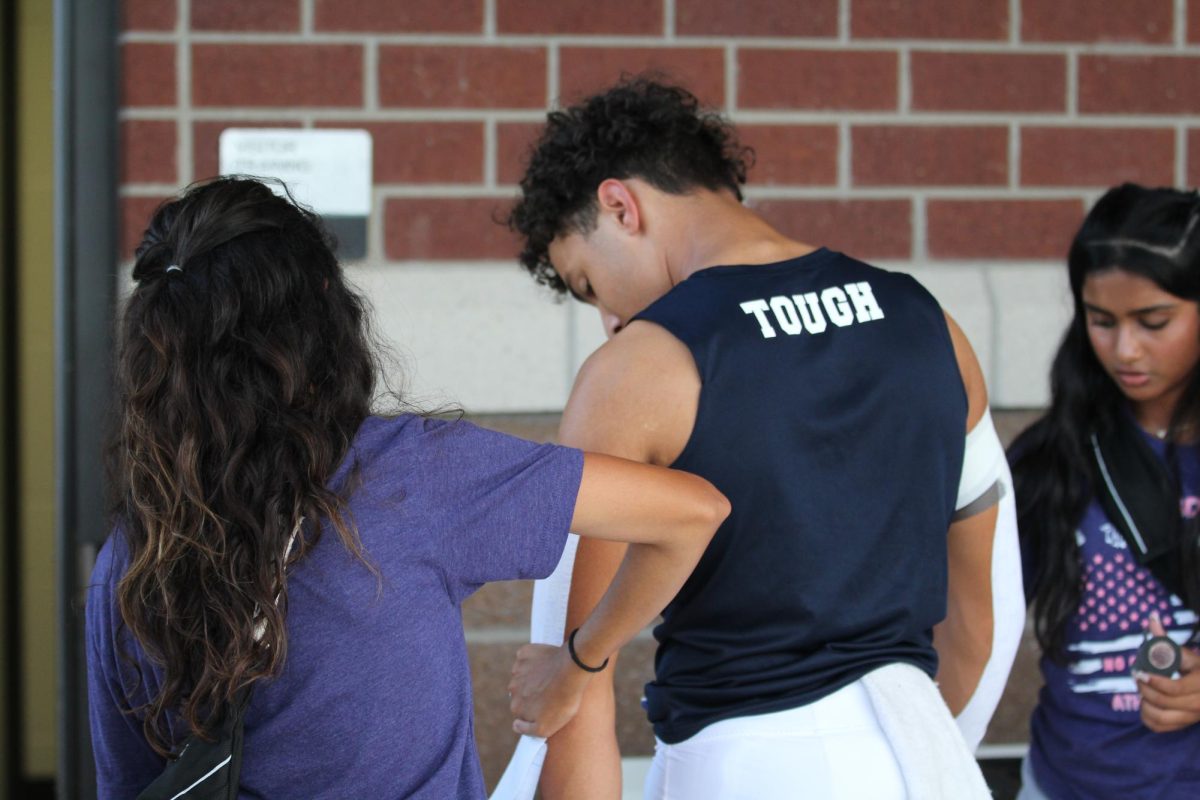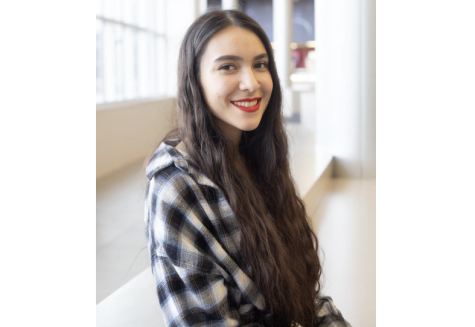The school has many programs that provide students with a glimpse into the workplace. Among these programs is the school’s student athletic training program, which has about 20 students enrolled.
The athletic training program is a hands-on experience where students work closely with athletes and professionals to learn about injuries and how to treat them.
“In athletic training we learn a lot about different types of injuries ranging anywhere from bloody and gory, to just simple bruises or tears,” senior Isabelle Zamora said, “We do a lot of wound care, a lot of taping, just a bunch of different skills. All around I feel like it’s a very good hands-on experience if you want to go somewhere in the medical field.”
The program is led by two certified athletic trainees.
“We have the two certified athletic trainers, so they’re definitely our main [trainers and instructors],” senior and head student trainer Elena Saucedo said. “And then it’s me and [the other student trainers]. We all work together really well.”
The class is broken into different class periods, based on the different team levels.
“We do a test at the end of the year. You take a practical and you take a written exam and based on your scores you can get assigned to freshmen, JV, and Varsity,” Saucedo said. Depending on what assignment trainers get, the student trainers will be able to work with different sports. Saucedo explains however that all students are still able to work with one another.
The test taken by students for placement, occurs in the spring semester and is composed of a few different aspects.
“In the spring we’ll have a try out session and it will consist of a physical test, like stretching and taping and a written test,” Zamora said, “So you’ll test on both of those and then they’ll combine your score.”
During each period, student trainers work with the athletes of every sport and medical professionals to give athletes the best possible care.
“We have three different class periods … a lot of different teams have 5th period and so we coincide with them,” Saucedo said. “A lot of [the student athletes] need rehab, or they need an evaluation, or if they need ice or need to be taped, then they’ll come to the training room, and we’ll help them recover.”
Being a student athletic trainer is no easy task but for those who love the class, it’s worth it.
“It can be [a big-time commitment], but I feel like it’s worth it,” said Zamora.
To the head trainer, Saucedo, this program is important not just because of the experience gained but also because of the medical care that athletes receive as well.
“I think it’s important because it gives people, especially us as trainers, so much actual valuable knowledge of what to do in medical situations. It also gives athletes, especially if they can’t afford to go the doctor, a reliable way of getting help.” Saucedo said.
Athletic training also gives the opportunity to meet other people and make friends.
“I think [the best part of athletic training] definitely the people that you meet, and the connections that you make because we spend so much time together, especially during football season,” Saucedo said.
If the students had one piece of advice, it would be to take the class.
“Do it, it’s a very smart decision if you’re looking to go anywhere in the medical field,” Zamora said.
The class has made an impact on the lives of many students and athletes alike.



